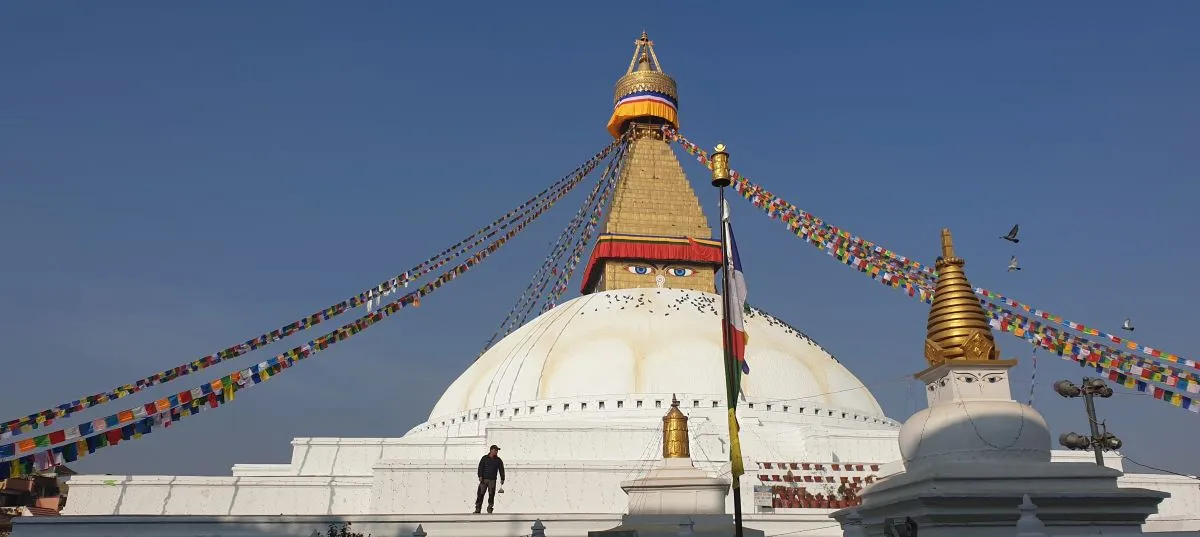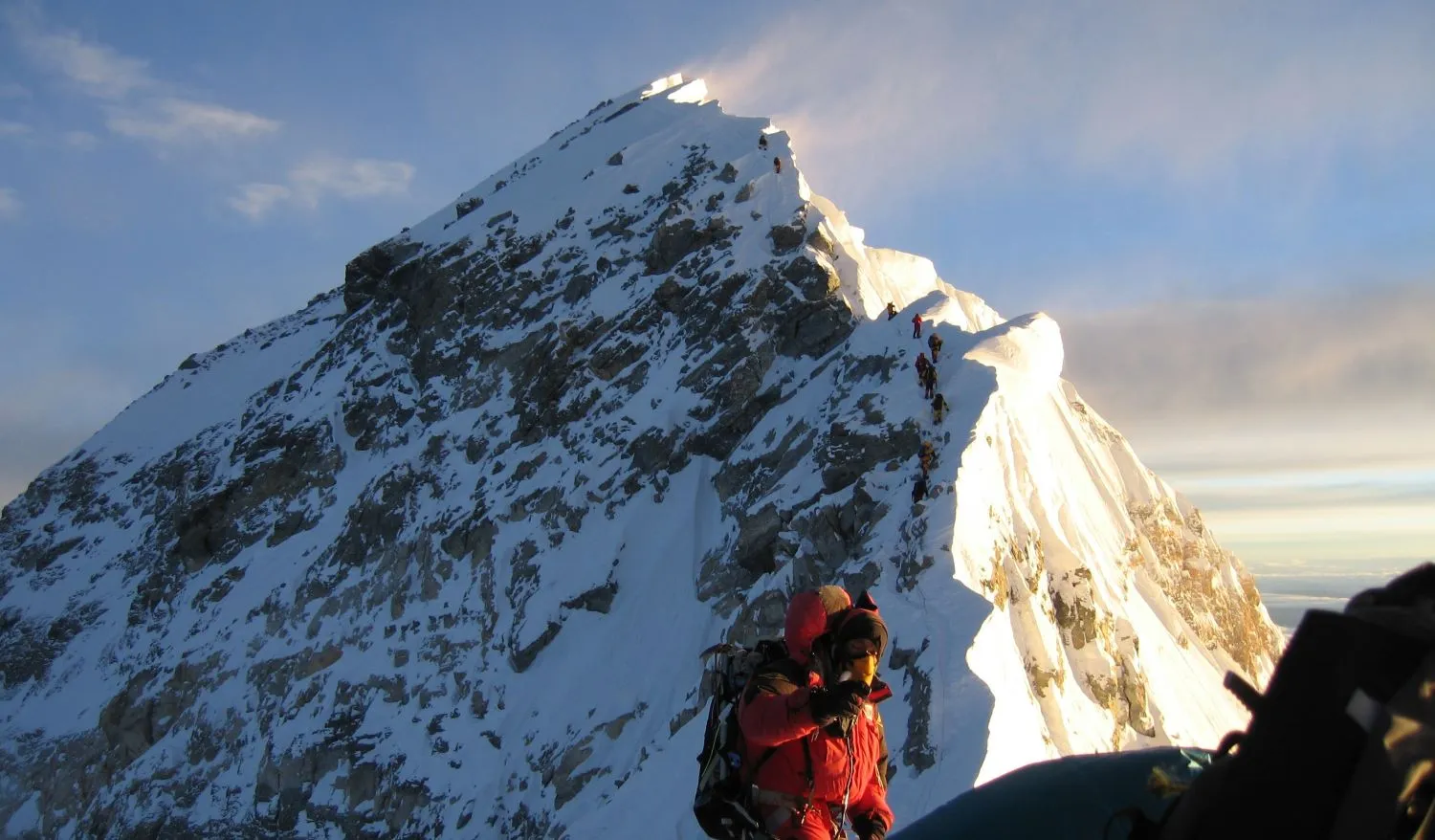UNESCO World Heritage Sites in Nepal
-
December 26, 2022
-
Ram Kumar Adhikari
UNESCO World Heritage Sites in Nepal: World Heritage Sites are significant places or structures internationally recognized and given special protection. Nominated and chosen by the World Heritage Convention, UNESCO, Nepal also has a few of these designated sites. These natural and cultural sites are a significant part of Nepalese society. There are four World Heritage Sites in Nepal. They are Chitwan National Park, Sagarmatha National Park, Lumbini, and Kathmandu Valley. Counted as one, there are seven sites in Kathmandu Valley. Sagarmatha National Park and Chitwan National Park are natural sites, while Lumbini and Kathmandu Valley are cultural sites.
Sagarmatha National Park
Established in 1976, Sagarmatha National Park (SNP) lies in the northeastern part of Nepal. The World Heritage Convention enlisted the park as a World Heritage Site in 1979. The national park is best known for sheltering the tallest mountain in the world, Everest, as well as rare Himalayan animals such as the snow leopard and red panda. The park also hosts at least 118 species of rare birds like snow cock, Himalayan Monal, pheasant, and many others. With an area of 1148 km 2 and an elevation of 2845m-8848m, it is the highest-altitude national park in the world. The SNP not only has dramatic mountain peaks and glaciers but is also home to over 20 traditional Sherpa villages. The Sherpas have inhabited these villages for centuries. Along with an unforgettable high-altitude natural experience, a trip to the SNP also gives visitors a rich cultural experience. They get to understand the close interrelationship between the ecosystem and the lifestyle of the Sherpas.
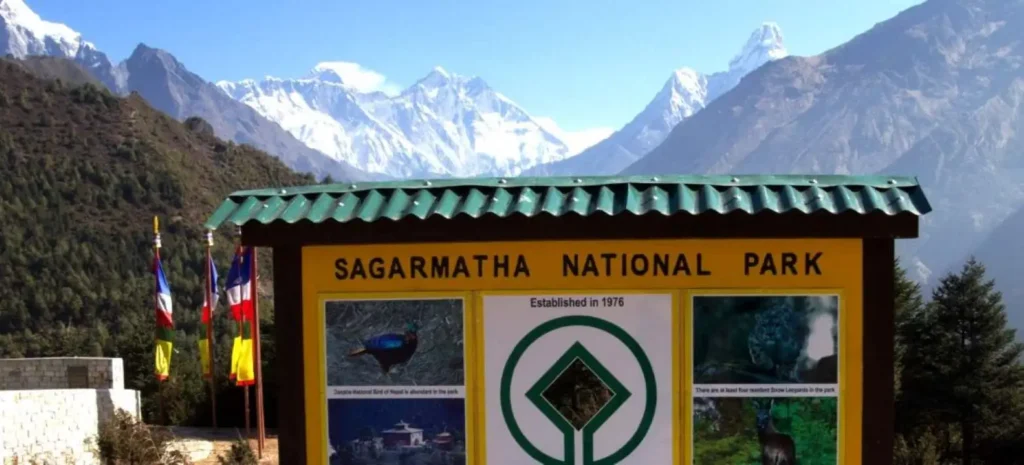
Chitwan National Park
Established in 1973, Chitwan National Park (CNP) is Nepal’s first national park. The World Heritage Convention granted the status of World Heritage Site to CNP in 1984. It has an area of 932km 2 and an altitude of 100m-815m. It is the last surviving example of the natural ecosystems of the Terai region. The park also offers jungle safari and elephant riding adventures, which makes for a fun and exciting experience. The park boasts an impressive number of wildlife species (over 700).
Covered with lush vegetation and grasslands, the national park lies on the banks of the Rapti and Narayani Rivers. Home to the endangered one-horned rhino and the Bengal tiger, CNP is Nepal’s most visited national park. It also has one of the highest concentrations of birds with over 350 species. Conservation International has recognized Chitwan National Park as a biodiversity hotspot.
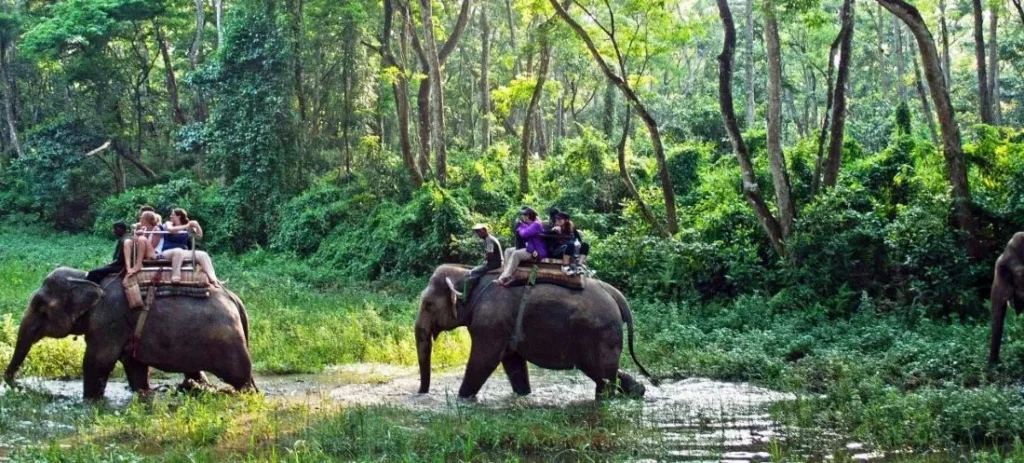
Kathmandu Valley
Kathmandu Valley has seven World Heritage Sites in and around Kathmandu itself. All these monuments are within a 20km radius, which means that a well-planned day is enough for someone to visit all of them. All these sites are of high cultural and historical significance that reflect the past of the valley. The devastating earthquake of 2015 damaged many ancient structures, especially in Kathmandu Durbar Square. Many of them are undergoing reconstruction.
Kathmandu Durbar Square
The Kathmandu Durbar Square is a symbol of unique traditional architecture reflected through a collection of monuments and exquisite wood carvings. This traditional architecture showcases the skills of Newari artisans throughout the 12th and 18th centuries. Some of these monuments include the Basantapur Tower, Taleju Temple, Hanuman Dhoka, Tribhuvan Museum, Kal Bhairav, etc. The Durbar square was once home to the palaces of the Shah and Malla kings.
The World Heritage Convention enlisted durbar square as a World Heritage Site in 1979. The Durbar square is also home to Kumari, the Living Goddess of Nepal. When the Goddess bleeds, she is no longer an incarnation. According to traditional rituals, people choose a new goddess after this. One can visit her in the Kumari Ghar, Basantapur. People visiting Nepal during late August or early September (depending on the lunar calendar) may have a chance to observe Indra Jatra. In this festival, people bring out the Kumari on a chariot.

Bhaktapur Durbar Square
Bhaktapur, also known as Bahdgaon or Kwopa, lies to the east of Kathmandu. It is often called the abode of ancient Nepali culture. The World Heritage Convention enlisted durbar square as a World Heritage Site in 1979. The Bhaktapur Durbar Square is a courtyard showcasing excellent pagoda-style and Shikhara-style temples. Some major attractions are the 55-Windows palace, Lion Gate, Golden Gate, an ancient statue of King Bhupatindra Malla, art galleries, and mind-blowing stonework and woodwork.
The Square is also known for its five-story Naytapola temple that withstood the earthquake of 2015 and the Dattatraya Square with the peacock window. With a high population of traditional Newar, Bhaktapur Durbar Square feels entirely untouched by Western culture. Each of the historical structures on the site reflects the medieval culture and religious importance.
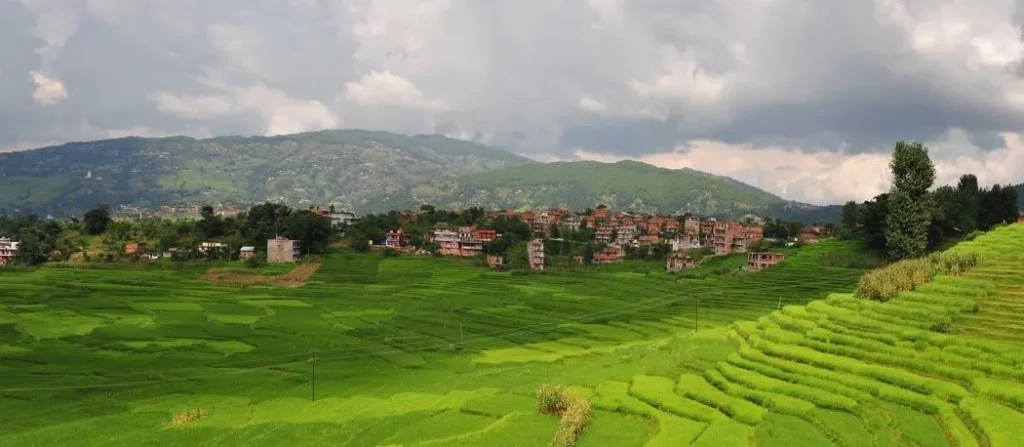
Patan Durbar Square
Patan, also called Lalitpur, lies on the southeast side of Kathmandu. Founded in the 3rd century by the Kirat dynasty, Patan was later modeled to its current state by the kings of the Lichhavi dynasty and the Malla dynasty. Patan Durbar Square is a timeless place where tradition seems eternal. The temple walls of the narrow alleys have wood and stone carvings of hundreds of Hindu and Buddhist Gods and Goddesses. There are countless such ancient temples with bronze gateways. There are three main courtyards in the Square: Mul Chowk, Sundari Chowk, and Keshav Narayan Chowk.
The Sundari Chowk is home to magnificent stone architecture and the Royal bath Tushahity. The Patan Museum within the Square is one of the best museums in Asia, with many admirable bronze statues. The Golden Temple, or the Hiranya Varna Mahavihara, is a three-story golden pagoda of Lord Buddha built in the 12th century by King Bhaskar Verma. The most popular attraction is the Krishna Mandir which is a 17th-century stone temple, and the only temple in Nepal to have 21 shrines.
Swayambhunath
Located 3km west of Kathmandu, the Swayambhunath is one of Nepal’s most important Buddhist temples. Founded by King Mandeva in the 5th century, the stupa lies atop a hill. Green trees and hundreds of prayer wheels surround the stupa, which just adds to the picturesque feel. The main entrance has 365 steps. The world Heritage Convention enlisted Swayambhunath as a World Heritage Site in 1997. The main stupa is a massive hemisphere of brick and clay that supports gold-plated conical spires. It has Lord Buddha’s eyes painted in all four directions to symbolize that He is looking over us at all times. Similarly, there are various temples, stupas, shrines, a museum, a library, and a Tibetan monastery surrounding the architecture.
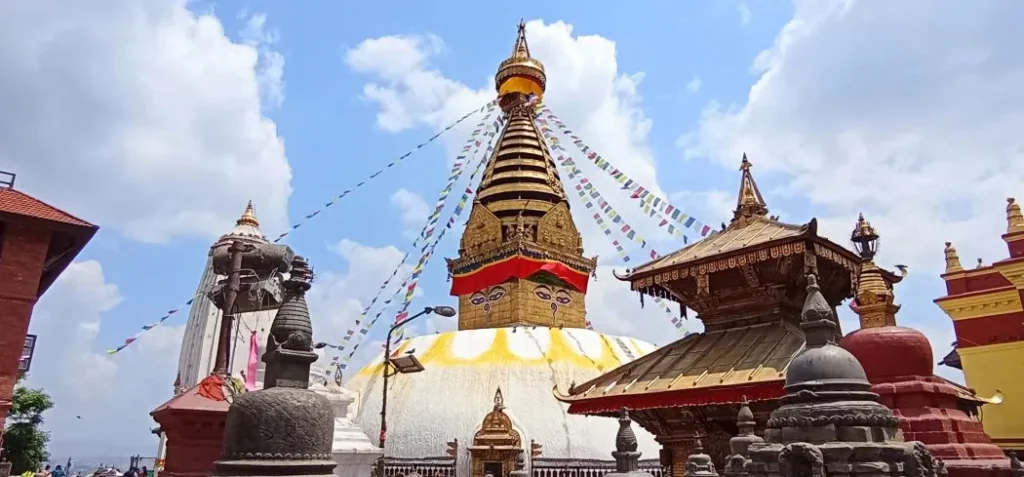
Pashupatinath
In Nepal, Pashupatinath is the biggest Hindu temple worshiping Lord Shiva. Also, an important Hindu pilgrimage site, Pashupatinath, welcomes thousands of pilgrims around the festival of Shivaratri. Built by a 5th-century Lichhavi King Prachanda Dev, Pashupatinath is located on the banks of the Bagmati River, northeast of Kathmandu. The World Heritage Convention enlisted Pashupatinath as a World Heritage Site in 1979. The Nepalese pagoda-style temple has a two-tiered roof and four silver doors. It also has exquisite wood carvings. One can observe the cremation of Hindus on the banks of the Bagmati in Pashupatinath. The temple premises also includes hundreds of smaller temples and shrines.

Boudhanath
Built by the Lichhavi King Man Dev in the 5th century, Boudhanath is one of the most ancient and largest stupas in the world. The World Heritage Convention enlisted Boudhanath as a World Heritage Site in 1979. When Tibetan Buddhists came to Nepal in the 1950s as refugees, many lived around the stupa, which led to the construction of over 50 gompas. This just energized the stupa even more and added to its peaceful vibe. The architecture is of the stupa is breathtaking from its white dome to its gilded tower. The construction is highly symbolic of Lord Buddha’s enlightenment. Originally built to house holy relics, there are 108 small images of the Dhyani Buddha Amitabha and a ring of prayer wheels around the base of the stupa.
Changunarayan
Surrounded by a forest of Champak trees and a village named Changu, the Changunarayan temple is about 12km east of Kathmandu located atop a hill. Surrounded by sculptures and arts of Lord Vishnu, Lord Shiva, Lord Krishna, Ashta Matrika, and many others, the temple is a two-tiered shrine dedicated to Lord Vishnu. Built during the Lichhavi dynasty, people believe that Changunarayan is the oldest temple in Nepal. The temple has stone inscriptions, sculptures, and other architectural masterpieces dating back to 464 AD. The World Heritage Convention granted Changunarayan the status of a World Heritage site in 1984.
Lumbini
Situated in Western Nepal, Lumbini is one of the most sacred places for Buddhists. It has excellent important cultural and historical significance for the origin of one of the most widespread religions in the world. For this reason, the World Heritage Convention designated Lumbini as a World Heritage Site in 1997. Lumbini has many ancient structures that date back to the 3rd century BC, if not older. Some of the major attractions include the Maya Devi Temple, Lumbini Garden, Thai Monastery, World Peace Pagoda, and many more. The Indian emperor Ashoka was one of the many pilgrims who erected the Ashoka Pillar, a commemorative pillar that testifies to Buddha’s birth in 249 BC. This pillar is also a significant attraction in Lumbini.

Conclusion
Nepal has a very diverse and rich history, which is the reason it has such magnificent culture and history. It is a beautiful country with so much to explore. These World Heritage Sites are a great way to immerse oneself in a foreign culture.

